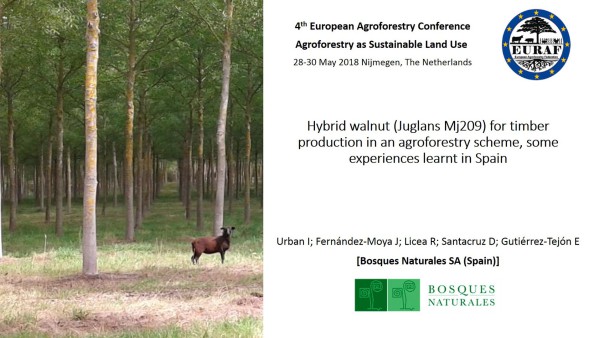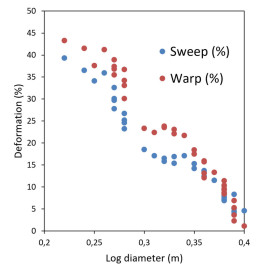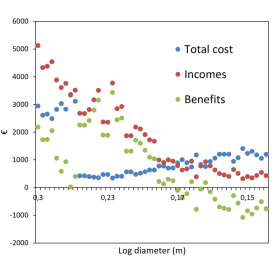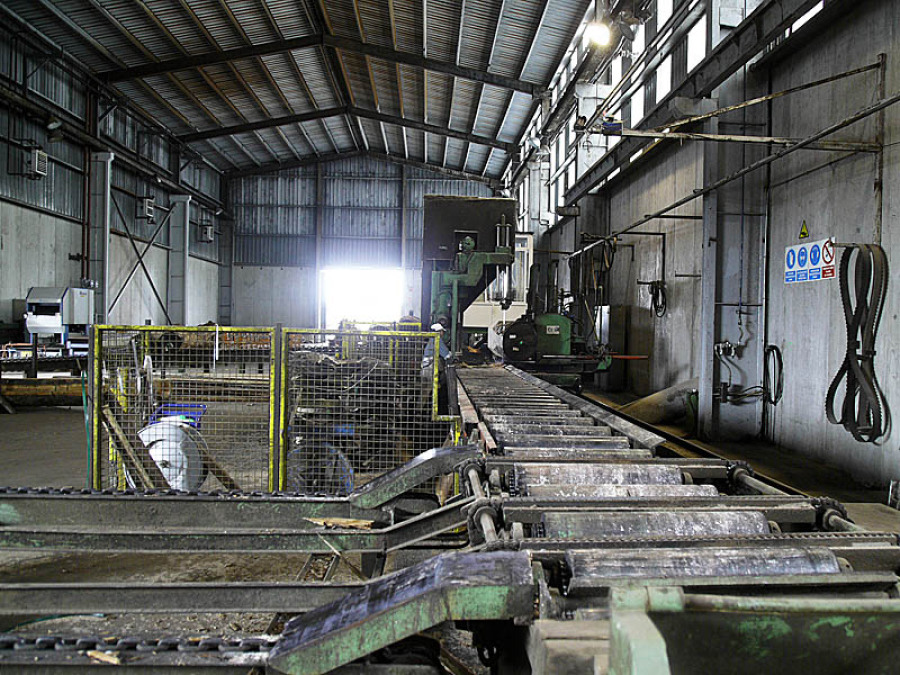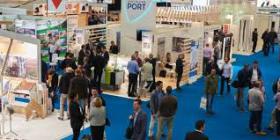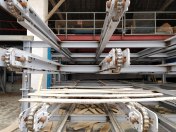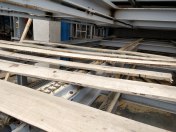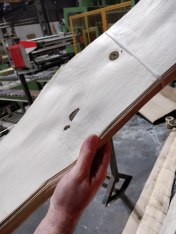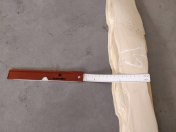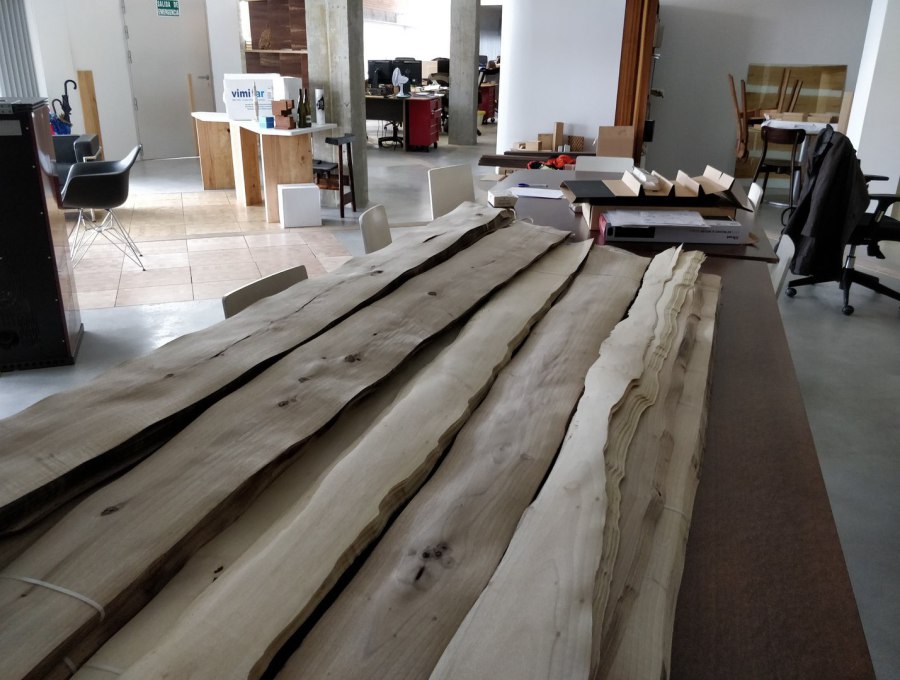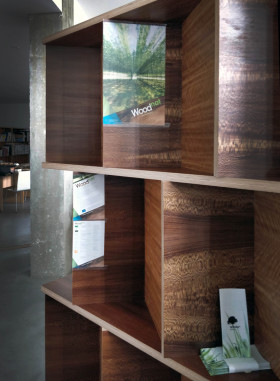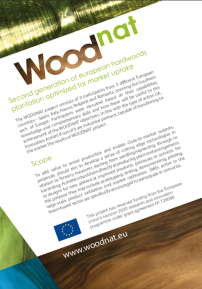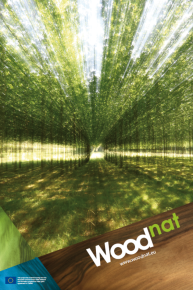Fungi and bacteria as fertilizers?
400 mill years ago, plants emerged form water and colonised the Earth thanks to the help provided by some fungi. Dependence of plants on helper fungi has been so strong ever since, that currently more than the 95% of the plants in the world live in symbiosis with fungi colonising their root system. This association is very robust and works perfectly because both exchange nutrients with each other. Fungi have an enhanced ability to absorb water and minerals from soil which pass them to plants, while plants contribute with carbohydrates from photosynthesis to fungi. This natural cooperation is called mycorrhizal (myco=fungi, rhiza=root) symbiosis and is really important in plant nutrition, particularly in the frame of climate change in which drought stress will be a limiting factor.
Research on the field of plant mycorrhizal symbiosis has showed a more complex picture, as there are many other organisms involved in the mycorrhization process. These organisms are different species of bacteria named “Mycorrhiza Helper Bacteria”. Symbiotic bacteria are also extremely important for some groups of plants, as some can take nitrogen from the air and pass it to plants. Also, independently from symbiosis, other bacteria benefit plants by making other limiting nutrients more easily available. This is the case for soil phosphorous solubilizing agents.
Walnut, like virtually all tree species, also benefits enormously from partnering with mycorrhizal fungi and other soil microorganisms. However, this important relationship is typically overlooked. It is frequent that soils subjected to intensive agricultural practices tend to have a very low amount and diversity of soil symbiotic microorganisms, so that when walnut trees are planted in such soils, their initial growth is poor and dependent on chemical fertilisers.
In walnut production, it is very important to ensure the best growth during the initial steps of the plantation, so that the maximum potential harvest can be achieved. For this reason, the use of mycorrhizal fungi such as Rhizophagus spp. and other soil microorganisms like Mycorrhiza Helper Bacteria or Plant Growth Promoting Bacteria, may enhance plant growth by optimizing the plant nutrient and water uptake and consequently root and shoot growth in walnut plants. As a consequence, the use of chemical fertilizers and other operating costs will be minimised.
Woodnat partners Bosques Naturales and ECM, have carried out several experiments aiming to enhance the survival and growth of walnut seedling from lab to field using mycorrhizal fungi and bacteria. Plants produced in vitro in the lab need to go through a process of hardening and adaptation to outdoor conditions. Our results show that when they count on the help of mycorrhizal fungi, young plants manage to adapt much better and survival and growth rates significantly increase.
Woodnat at Review Meeting REA Brussels
Six out of nine Partners of Woodnat Project meet in Brussels between June 4th and 5th. They held two different meetings. From one hand, the partnership held a
follow-up meeting on June 4th. On the other hand, the Consortium presented the results of Woodnat Project to the Research Executive Agency on June 5th. For that occasion, two External Experts were
invited to review the efforts and advances of the Partners.
The agenda of the day started with the Presentation of the Partners coming from five different countries. Seistag and Bosques Naturales presented those Partners who could not come to the meeting.
Later, three technicians offered an overview of the Project based on a three step program: plants, trees and wood. The explanations on the work done started after this introduction.
Francesco Pelleri from CREA held the first talk. He showed the estate of the art on Walnut plantations in Europe. The Italian Partner showed different plantation models and measured their performance
over the time. The second turn was for Ignacio Urbán from Bosques Naturales. He explained different models of thinning and forest management that have been tested within Woodnat Project. His
presentation included innovative solutions based on agroforestry. He also explained the work carried out in the field of Walnut stump degradation using edible mushrooms. ECM provided the technology
selected for this purpose. This innovative solution avoids natural re-grow, is ecological and provides an output with commercial value.
After those presentations, it was time for the industrial partners. The Project Coordinator explained the work of Seistag in the field of Walnut timber. They learned from Losan how to map the
productive process, measure yields and calculate the output value. He also explained the collaboration with Asimov, who developed a tool for efficient handling of wood pieces. A technician from Losan
completed the exposition. The Company from Romania explained it´s work on veneer production using Hibrid European Walnut. Those Companies registered data along the productive process and analysed the
quality of the output. By means of this, they could conclude the best path for the industrial valorization.
Later it was time for future plants and future plantations. From one hand, Ricardo Licea shared the good results that have achieved Bosques Naturales regarding Walnut propagation. He pointed out the
method that will be used for scaling-up the production of Walnut plants within the facilities provided by Industrial Plants in Bulgaria. On the other hand, Ignacio Urbán shared the three plantation
models to be planted in the next months. They will happen in three European countries: Spain, Italy and Bularia. Moreover, they will follow the most effective forest models in terms of economical,
societal and environmental sustainability.
The last group of presentations included Eduardo Brocal from WAF and Finally Emmanuel Groutel from WALE. During that meeting, WAF shared the estate of the art of the Woodnat Project App. The design
of the tool was complete within the first 18 months and will provide information to the forest owners and industrials. On the other hand, WALE offered an overview of the Walnut challenges considering
the market evolution. According to his words, the industry is focused on secure supply so the market offer changes to be narrower every year. He also pointed out that the strategy for Walnut success
in Europe should recognize that Walnut forest is more than wood. It has a positive impact on biodiversity and soil preservation. Moreover, it contributes to reducing the risk and damages of
fires.
Quality characterization
Value is a matter of quantity and quality. The study of young European walnut trees showed that slicing small diameter logs produces low yields: small production but also poor average quality. When using young trees, most of the material produced is “B” and “C” quality, which means little value. So, most of the production has low value, rendering production of thin veneer by means of slicing unfeasible.
For that reason, the industrial partners agreed to develop thick veneer production. There are several issues to be considered regarding this question. On the one hand, slicing is always done "cut by
cut". Meanwhile, many cuts can be done at the same time by means of sawing. When the log is small, a single cut produces little wood product. By means of devices performing multiple cuts, it is
possible to multiply the amount of wood produced and therefore it is possible to increase productivity.
On the other hand, the thin veneer of young trees shows technical troubles. During the analysis, the most relevant ones have been identified. They are warp, sweep and surface marks due to the slicing
process. When producing thick veneer, the impact of these defects is lower. Thicker wood pieces tend to be more stable. This means little impact of warp and sweep. Band-saw milling also avoids marks
on the veneer surface.
Bosques Naturales at the European Agroforestry Conference
Bosques Naturales has participated in the 4th European Agroforestry Conference: Agroforestry as Sustainable Land Use that has been organized by the European
Agroforestry Federation (EURAF) between 28-30 May 2018 in Nijmegen (The Netherlands) (see link of the conference webpage below).
The presentation (which can be downloaded from the Research Gate webpage of the WOODNAT, see link below) was a summary of how Bosques Naturales has modified the management of the walnut plantations
during the last years and how we think adding walnut trees spread out in agroforestry systems is a nice alternative to improve the agricultural/pasturelands of many farmers in temperate regions.
Indeed, several farmers and research institutions has showed interest in testing our clonal plant material in their edaphoclimatic conditions.
The different meetings with farmers and researchers along this event reinforces our feeling that working with walnut is very appealing for many people and push us to improve our systems and fulfill the objectives of the WOODNAT project, either in the nursery, the industry and the silviculture.
WOODNAT APP
Waf Estructuras Digitales finished in March the first trial for the App in the woodnat project. The app was shown by WAF to Bosques Naturales before the end of the Period 1, and WAF is proud to show some captures in this news.
The App has been created by Waf, with the effort of Bosques Naturales and CREA, and during the first months, Waf and his partners has interviewed, with end customers, owners and wood companies to acquire the ideas of what the market needs and to develop the app.
With the cooperation from Bosques Naturales, Waf has developed an App in Android, to facility Forest Owners, services and wood companies to be in touch and will be add some manuals and guidelines to help users to improve their forest.
The next steps into the app Waf will do, will be to translate to different languages, finished for IOs also, in order to spread out the app, and to finish the integration of the App with the Azure Back Office.
This App will be showed in Brussels in the meeting coordinators, next 5 June, and as soon as the App will be finished, the App will be downloadable for all the End users and wood companies, interested in the advantages of this app.x
Qualitative data on veneer production
Much has been said about European walnut veneer production during the first period of the WOODNAT Project, mainly about yields and process profitability. In addition to these conclusions, the industrial partners have researched the technical quality of the wood and the perception of its quality by the potential customers.
LOSAN ROMANIA has measured the statistical distribution of the deformation percentage in European walnut veneer. The study focused on sweep and warp, considering the impact of log diameter on the percentage of deformation observed. The final figures show a strong relation between log diameter and wood stability, which seems to confirm production of thin veneer with logs with a diameter of 30 cm is not feasible.
Another consideration of walnut wood quality refers to how it is perceived by the potential final customers: the so-called “perceived quality” which is the key value of a product in terms of market penetration potential. In order to get this information, LOSAN ROMANIA conducted a large survey among its customers in Europe. The survey showed customers had little interest in natural European walnut veneer due to its colour. It also showed little interest in veneer produced by means of peeling because of its design.
Considering the technical difficulties to deal with thin veneer (0,5 to 2mm thickness), the industrial partners decided to try production of thick veneer (2 up to 7mm thick). A thicker veneer reduces the impact of deformation typical of small logs. Moreover, thick veneer can be produced using a sawing technology that produces a quality that adjusts better to the final consumer's preferences. The first experiences of thick veneer production were carried out at the LOSAN ROMANIA sawmill. Further work was developed by SEISTAG to develop a sawing line suitable for small diameter logs.
Carrefour International du Bois, leading timber tradeshow
With its concept 100% wood
The event that is unique in Europe with its concept 100% wood, the tradeshow is organised every 2 years in Nantes (France) by the trade for the trade (Atlanbois and The Grand Maritime Port de Nantes
Saint Nazaire). Leading tradeshow tales place over 3 days and groups over 550 exhibitors and 10 520 visitors coming from 80 countries. Sawn timber, boards, parquet, specialized trade, and
timber construction solutions… all the products and innovations are available under one roof.
The organization of events during the show (conferences, general assemblies, meetings…) has made this show, the event that is not to be missed by all the trade. A place to exchange information:
be it about the market, the latest tendencies, new products etc. - It is an excellent barometer. The 15th edition will take place the 30th, 31st and 1st of June 2018.
Some partners of Woodnat project will participate. It will be the case for WALE. Looking for new trends and applications, trying to understand the positioning of Walnut species.
Partners meeting on WP4
SEISTAG, LOSAN and BOSQUES NATURALES meet at SEISTAG facilities on May the 11th. The Companies shared the advances achieved during the last months, which include closing the first Period of WOODNAT work program. The results achieved refer to veneer production with different thicknesses. LOSAN worked on thin veneer while SEISTAG produced thick veneer. The WOODNAT website shows details on those results.
During the meeting, the Partners agree about the next steps. Those actions refer to changing the natural colour of the thin veneer. The Partners considered two paths: vaporisation and dyeing. The first process will be applied to regular veneer. The second will be used for 100% sapwood veneer. LOSAN will develop the trials in Romania during the next weeks.
The Partners also shared their interest on some technical details of the experiments that have been already finished within WOODNAT. BOSQUES NATURALES showed their interest on the internal costs of LOSAN during the veneer production. Meanwhile, LOSAN asked about the plant production technology used by BOSQUES NATURALES and the results achieved so far.
During the meeting, LOSAN agree to send the veneer already produced to the Partners in order to allow further trials. In addition to the technical questions of Work Packages 4, the three Companies also shared information on tasks that are out of that Work Package. They pay attention to the evolution of the KPIs. They also shared impressions regarding the WOODNAT Presentation, which will take place in Brussels, on June the 5th.
Veneer handling first trials
In March 2018, ASIMOV started the first trials with the veneer handling system. The system was placed at SEISTAG’s sawmill. It worked properly being able to catch the material and move it without incidences. The European walnut thick veneer moved on the structure just as it was planned months before.
The partners found out that handling represents less than 10% of the personnel costs when producing thin veneer. Meanwhile, those costs represent up to 35% when producing thick veneer. For that
reason, the system was placed at a sawmill where thick veneer is produced. The tool contributes to reducing these handling costs.
The system is based on four levels of trays. Each level can be programmed with a different measure or veneer quality. At the moment, the system is only able to recognize different measures. Within
the next months, it should be able to recognize other characteristics such as knots or cracks.
To achieve this, ASIMOV works with artificial vision. This technology will make possible the handling to be not only automated, but also intelligent. Separating the wood without quality is very
important as the sawing of small logs produces many defects.
European walnut thin veneer
In March 2018, the first deliverable from LOSAN ROMANIA was successfully submitted. The document is part of the WOODNAT Project and provides general information and results of veneer production from European walnut logs.
The information submitted to the European Commission explains how veneer is currently produced. It also explains how productivity is calculated by means of automatic measuring and labeling. These
efforts to obtain more production control are carried out for all logs and veneer bundles. The company’s website offers detailed
information for those who might be interested in these questions.
In addition to this general information on the thin veneer production, the document submitted by LOSAN ROMANIA also offers detailed information on the specific issue of transforming European Walnut
into thin veneer. Complying with the work program, the minimal diameter has been identified. Defects such as wrap and sweep have been studied and measured.
The study carried out by LOSAN ROMANIA also analysed some technical difficulties that are typical when processing wood from young trees like surface marks that occur during the slicing process and
cracks that happen during the drying process that eventually will have the veneer discarded.
WOODNAT Poster and Flyer released
WOODNAT Project has published its Flyer and Poster. The design of the Flyer and Poster has been produced by WALE. Meanwhile, BOSQUES NATURALES provided photography.
The documents can be download in PDF format at WOODNAT website. They offer information about the objectives of the Project and the composition of the Consortium. Nevertheless, all the information
about the Project is public at the Project Website.
Most of Partners display the documents at their offices in other to boost transparency and communicate the activity carried out under the Project. The pictures show beneath these words have been
taken at SEISTAG facilities in Spain. LOSAN, which is also a partner of WOODNAT Project, produced the wood veneer supporting the display.
A SECOND VERSION OF WOODNAT POSTER WITH PARTNER'LOGOS IS ALSO AVAILABLE.
WOODNAT gets 4.0
On March the 22th, the 4.0 commission of Cluster da Madeira (the Wood Industry Cluster) hold its second meeting. The encounter took place at FEUGA installations in Santiago de Compostela (Galicia). During that afternoon, several companies of the wood industry shared their experience on TIC implementation within the wood industry.
LOSAN and SEISTAG are members of Cluster da Madeira. Therefore, they had representation at the meeting. The encounter also included some of the most important wood industries such as FINSA, SENSSIA,
BIOMASA FORESTAL, MOBALCO, PUERTAS BETANZOS or ALIUSPORTA.
All the Companies showed their interest on the introduction of innovative technologies in order to improve processes. Artificial vision and collaborative robotics seem to be the most interesting
technologies in order to improve competitiveness within the conventional industry. Moreover, those technologies do not represent extraordinary investments at the current moment.
Within this context, the industrial partners of PRINTODECO Project gave details on how those technologies were implements thanks to the WOODNAT European Project at SEISTAG facilities in Viladecruces
(Pontevedra), Spain. During the meeting, FINSA explained that they developed their own veneer handler at Pontecesures Facility, also placed in Pontevedra.
This technical solution chosen by that Company was based on artificial vision, vacuum grips and robotic arms. Meanwhile, for the same purpose WOODNAT developed a solution based on weight measuring
and movable trays.
A brand new flyer
We are proud to announce you launch of WOODNAT' flyer. You can load it and print it and share with your contacts, customers, contractors, stakeholders !
This flyer presents in a few words what is Woodnat and who are its partners.
A wonderful POSTER
For all the partners it is important to communicate on Woodnat's project. Thanks to this poster (you can easily print) you can give an incredible image to
Woodnat.
During timber shows, exhibitions, fairs, meetings : use it !
In your office : don't hesitate to hang it on !











